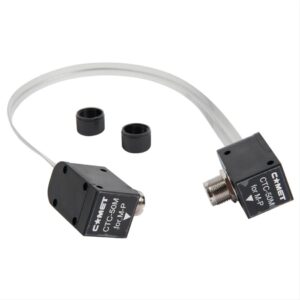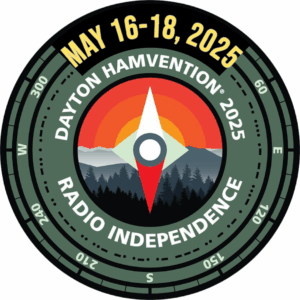
Using a 50m steel tape measure, Paul Timkovic from OM0ET created a portable cheap antenna.
The world of amateur radio operation can seem very expensive and even intimidating, but it can be quite rewarding too. Also referred to as ham radio, the hobby allows people to send communications over a long distance and across a whole host of protocols, including regular speaking, Morse code, television, and even TCP/IP for sending packets over the internet. However, the equipment required to get started is still fairly expensive, so Paul Timkovic, who runs the ham radio YouTube channel OM0ET, decided to build his own antenna using only a tape measure along with a few other inexpensive parts.

End fed half wave antenna basics
One popular antenna choice amongst amateur radio enthusiasts is the end fed half wave (EFHW) design, as it lets a single piece of metal pick up multi-band frequencies while only needing a coaxial cable at one end. This means it can be easily mounted in a wide variety of places for a relatively low cost, although it is also more susceptible to interference compared to other types.
Modifying the tape measure
To start his project, Timkovic purchased a steel tape measure with a 50m length and promptly cut it down to 40m to achieve high sensitivity in the 3.75MHz and 7.125MHz bands. Apart from the tape, some copper wire was wrapped around a magnetic core to create a matching transformer. Its responsibility is to transform the antenna’s high impendence of around 4,000 to 5,000 ohms to a mere 50 ohms that the coax feeder possesses.
After securing the coax connector and transformer to the inside of the tape measure’s housing with a silicone adhesive, Timkovic attached a larger wire to the output of the transformer and soldered the other end to an alligator clip that clamps onto the tape once extended.

Setup and testing
With the hardware now ready, Timkovic went outside into a local forest and set up his new tape measure antenna. The base was anchored to the ground using the built-in strap and a screw, while the other end 40 meters away was hooked onto a small tree. The incoming signal was analyzed by a MINI1300, which is a handheld device that, among other things, is able to sweep across several frequencies and display how strong the signal is at each one. Unsurprisingly, the antenna was quite good at picking up the 3.75MHz and 7.125HMz bands while struggling at higher frequencies.

Once completed, Timkovic got out his X6100 transceiver and made successful transmissions, all of which were visible on the transceiver’s waterfall display. To see more of this DIY antenna in action, you can watch his video here on YouTube.








